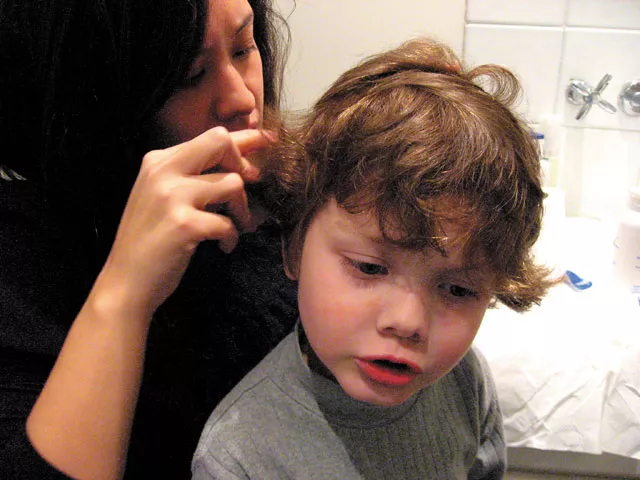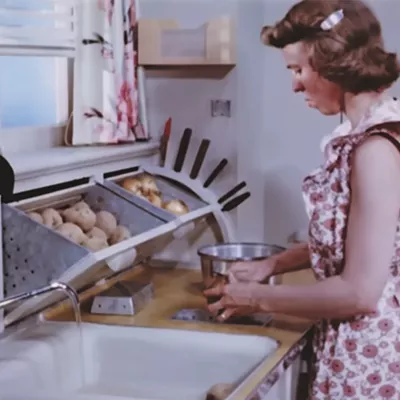Tracey, a Spokane mother of three thick-haired children, wrote a short response back to her son’s kindergarten teacher after receiving the most recent official Head Lice Parent Notification Letter from Spokane Public Schools:
“I would rather gnaw off my right hand than have lice in my house again.”
It’s been nearly a year since her family’s run-in with lice, and Tracey is more objective about what she went through, but her scalp still itches thinking about it.
“I totally freaked out and went off the old wives’ tales. I bagged and washed all the clothes in all the drawers, thinking the eggs could be anywhere,” she says, recounting her frenzy. “I thought if my daughter could get lice that easily, and I missed anything, then all my kids could get them every month.”
Spokane school nurse Sarah Griffiths says misunderstandings about lice are at the root of parents’ emotional responses.
“From a medical perspective … lice is a minor issue, it’s just something that happens,” Griffiths says. “There is a misconception, generally speaking, that lice is about socio-economics. Parents believe they may be viewed as poor or dirty [if their children have lice], but I don’t think there is any correlation between cleanliness, wealth or grooming.”
Trisha Lutey concurs. “Lice don’t pick and choose who they’ll live on. It can be someone super clean… and you aren’t a bad parent if it happens.”
Known in the Spokane community as “The Bug Lady,” “The Lice Lady,” or her professional title, “The Hair Angel,” Lutey’s relationship to the misconception about lice is paradoxical. She makes a living from people’s fear, and her goal is to never have the same client twice.
By day, Lutey is a professional hairstylist; by night, she makes house calls to families stressed out about head lice.
“The first thing I do is calm a parent down, and give them some education over the phone,” says Lutey. “I tell them as far as bedding or clothes, you don’t need to wash it. Just throw it in the dryer for 10 to 20 minutes on high; extreme heat kills live lice and if there are nits [lice eggs], they’ll die without contact to a human head. If there are stuffed animals on the bed, put them aside in a bag for 24 to 48 hours, and vacuum the house thoroughly.” That’s it.
The Spokane Regional Health District has a brochure on lice removal if you want to do it yourself. First, they recommend examining everyone in the house for nits — small brown or white oval-shaped eggs attached to the hair shaft near the scalp. The actual louse insect is more rarely seen; it’s about one-eighth inch long and brown. You only need to treat household members who have lice or nits on exam.
Next, use a treatment product as directed. Then after treatment, use a metal lice comb to get rid of all nits. Dispose of your quarry in the toilet, vacuum around the treatment area and change your clothes, as well as the child’s. Comb in this way every day for seven days until you no longer find any lice. Then repeat the treatment shampoo as directed, and continue combing for another week after the last egg or louse is removed.
Lutey says she often gets calls from people who’ve failed several times to kill lice after following health department, school or doctor-prescribed remedies. She says new research shows conventional pesticide-based toxins like RID and NIX no longer work.
“Just as humans are becoming immune to antibiotics because they’re over-prescribed, lice are becoming immune to pesticides,” she explains, in effect becoming “superlice.” As creepy as it sounds, a louse’s super status doesn’t change Lutey’s approach, or her fee. She charges $75 an hour and, depending on the thickness and length of hair, takes 45 minutes to an hour with each child. She also markets her shampoo and tools for do-it-yourselfers.
Lutey says her busiest month in two years of business was in August, likely because of summer camps. And she believes having all the children’s coats together in a school closet can add to the spreading problem.
Yet Griffiths and Lutey assure people that while a louse’s claw-like feet are adept at moving quickly on a human head, they are practically immobile once on fabric like clothing, coats or hats.
“They don’t jump. Lice are only concerned with feeding and reproducing,” says Griffiths. “They will not leave one food source without seeing another food source.”
And unfortunately, our young sons and daughters are the easiest meal.
“One of the reasons lice pass so easily is that small children don’t have a sense of personal space,” says Griffiths. “Little girls talk and play with their heads together, arm in arm. It’s wonderful when children create community; it’s so good for their emotional and social health, but it has this downside.”
The district formally refers to lice as a “communicable condition,” not a sickness, an epidemic or an outbreak. Other than potential inflammation and pervasive itching, lice don’t transfer disease. Griffiths says the priorities of the district-wide policy she helped create are to minimize classroom disruption and protect the anonymity of children affected.
“For the families who are in the midst of it,” Griffiths admits, “getting rid of lice is a lot of work, but children aren’t afraid or threatened… if a parent is calm, matter-of-fact about contacting the school, and just takes care of the problem.”
In retrospect, Tracey hopes she kept most of her “freaking out” to herself, but she feels badly about how much distance she kept from her children while she was treating them.
“I didn’t want to touch their heads, or for them to touch my pillow,” she says. “Every time I bent down to kiss them I thought about it — ‘Oh, just give me a handshake goodnight,’ or ‘Hey, high five, high five,’” she laughs. Tracey is sure she would handle it differently now, and hopes she never has the opportunity. She really needs that right hand.














